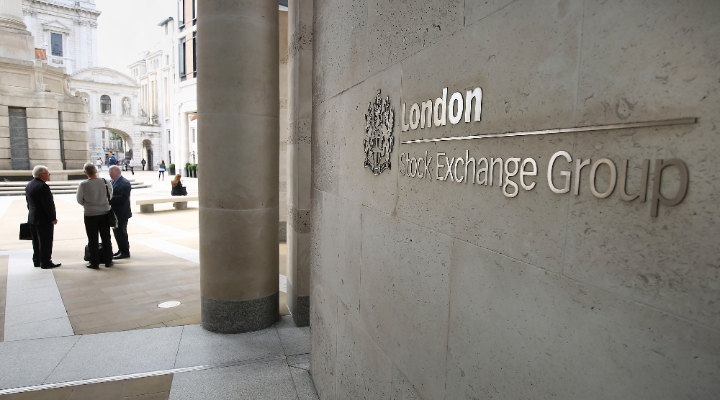
Have you ever looked at a company whose share price is plumbing the depths and worried that the lunatics were running the asylum?
Likewise: have you ever worried it would be a big mistake to think a stock is going back up just because the valuation is lunacy? We have. Frustratingly, it's happened all too frequently amid Brexit, Covid-19 and the cost-of-living crisis.
Share buybacks are often overlooked, but unlike conventional investments, they have no execution risk and the outcomes are future-proof. As such, we believe there are times when buybacks should rank first among capital allocation priorities.
We have come to weigh companies with positive attitudes to buybacks more heavily in our stock selection process. Superficially, buybacks signal healthy cash generation, robust balance sheet positioning and a desire to return capital to the owners.
Ultimately, they are a sign that management understands efficiency in capital allocation is fundamental to shareholder value creation. In addition, buybacks are often the arbiter of sanity – instilling confidence and valuation disciplines amongst investors more widely.
Multiplier Effects
A company’s valuation is fundamental to its capital efficiency, and the merited place of buybacks in a capital allocation framework. At a given low valuation, returns on capital through buybacks will be superior to those available via investment.
This efficiency alone justifies boards prioritising buybacks far more highly than is the case conventionally, but even more so because buyback returns are potentially bolstered by accompanying multiplier effects, giving rise to returns on capital (and shareholder value creation) that are near impossible to achieve in other ways.
Measuring a buyback’s return on capital may not be widely thought through, perhaps because buybacks are intuitively defeatist – undoubtedly management feels an imperative "to do better" as companies can’t shrink their way to greatness and the natural order of business is to pursue revenue growth. Hence, buybacks are typically resisted for fear of "short-termism" (being an expediency at the opportunity cost of longer-term growth).
Boards must, in essence, measure between amounts of capital required to generate equivalent earnings-per-share growth (the ultimate measure of shareholder value creation); buybacks generate per-share growth by shrinking shares in issue, investment drives per-share growth via generating new profits. When buybacks achieve the equivalent growth for less, capital allocation should prioritise them as the equivalent return on capital is superior.
A follow-on thought here is that valuations are, de facto, too low when buybacks generate superior returns. This is because buyback returns on capital represent the market’s cost for equity at that moment in time: it is nonsensical for the cost of equity to be higher than the returns a business can generate through conventional investment when those returns are relatively desirable in the first place.
At such moments, value-creating businesses are priced as value-destroying, and so valuations are definitionally too low. All the greater reason for boards to have confidence that buybacks, here, are value-creating.
Merits must also be viewed in risk-adjusted terms. Unlike conventional investment, buybacks have no execution risk and outcomes are future-proof (the per-share enhancement is permanent).
Buybacks should also be considered in terms of multiplier effects. They may oblige:
• intended short sellers to desist;
• existing short positions to close;
• existing holders not to sell; and
• undecided investors to invest, encouraged by management’s vote of confidence in valuation.
As multiplier effects generally lead to re-ratings, the change in market valuation can represent many multiples of capital invested in buybacks, being stellar returns on capital nearly impossible to achieve in any other way.
It also follows that, for businesses strategically pursuing in-organic investments (where buybacks cause shares to re-rate), the higher "currency" value benefits the affordability of acquisition-driven EPS accretion. That creates virtuous cycles of acquisition-driven growth.
Finally, buybacks specifically reward long-term owners by increasing their proportional claim on the business.
No Coincidence
In our view, there are times when buybacks should rank first on the capital allocation priority list. Frustratingly, we find boards are often reluctant to accept this, convinced as they often are of the danger of short-termism while rigidly adhering to conventional capital allocation frameworks that list priorities as organic and acquisition investment and dividend distribution, followed by debt repayment. If capital generation is then deemed surplus, special dividends can also feature but buybacks typically come last – if they come at all.
We don’t think it is a coincidence the most egregious mispricings within our UK equity strategy’s holdings over the last few years have occurred in companies whose management is philosophically against buybacks (despite the availability of surplus capital).
Neither do we think it a coincidence that our strategy’s best performers are generally stocks with established buyback disciplines, or those where management have instigated buyback programmes, convinced by the merits described above.
We’re not claiming buybacks are a panacea for share price ills, but we would expect to see them in the best-performing funds.
Jeremy Hewlett is UK equity portfolio manager at Mirabaud Asset Management




























